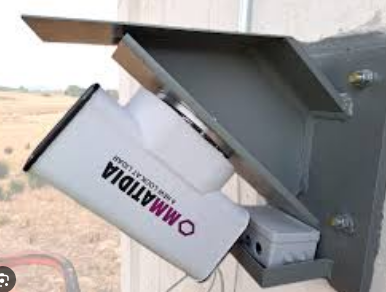The Importance of Remote Vibration Sensors in Industrial Monitoring
In industries where machinery and equipment are crucial for operational success, maintaining their efficiency and health is essential. One of the most effective ways to monitor machinery is through vibration analysis, and remote vibration sensor have emerged as a powerful tool in this field. These sensors provide real-time data on the vibration levels of machinery, allowing for early detection of potential problems and ensuring smooth operation across various industrial sectors.
What is a Remote Vibration Sensor?
A remote vibration sensor is a device that continuously monitors the vibrations of machinery and equipment from a distance, transmitting data to a centralized system for analysis. Unlike traditional vibration sensors, which require manual readings, remote vibration sensors allow for continuous, real-time monitoring without the need for on-site presence. These sensors are equipped with wireless communication technology, enabling them to send vibration data over long distances to remote monitoring stations or cloud-based platforms.
The sensors are typically installed on critical equipment like motors, pumps, compressors, and turbines. They measure vibration levels, frequency, amplitude, and other parameters that help identify any irregularities in the equipment’s performance. The data collected by remote vibration sensors can then be used to predict potential failures, optimize maintenance schedules, and improve overall machine reliability.
Benefits of Remote Vibration Sensors
1. Real-Time Monitoring: One of the key benefits of remote vibration sensors is their ability to provide continuous, real-time data on machinery health. This allows operators to detect abnormal vibrations immediately, helping to identify issues before they escalate into major failures. By providing constant monitoring, these sensors help ensure that equipment is operating within optimal parameters.
2. Predictive Maintenance: Remote vibration sensors play a vital role in predictive maintenance, which is a proactive approach to machinery upkeep. By continuously monitoring vibration levels and analyzing trends, the sensors can alert maintenance teams to potential issues before they lead to equipment breakdowns. This allows for timely interventions, reducing the risk of costly repairs and unplanned downtime.
3. Cost Savings: By detecting problems early and minimizing unscheduled downtime, remote vibration sensors help companies save on maintenance costs. Additionally, these sensors allow for more efficient use of resources, as maintenance can be scheduled during off-peak times or when equipment is already offline for routine checks, optimizing overall operational efficiency.
4. Enhanced Safety: In many industries, machinery operates in hazardous environments or at high speeds, making manual inspections risky. Remote vibration sensors enable safety by allowing for monitoring without the need for personnel to be in close proximity to potentially dangerous equipment. This reduces the risk of accidents and helps ensure a safer working environment.
5. Data Accessibility and Integration: Remote vibration sensors collect data that can be accessed from anywhere, as long as there is an internet connection. This accessibility allows operators, engineers, and maintenance teams to monitor equipment remotely, which is especially useful for operations in remote locations or large-scale industrial plants. The data can also be integrated with other monitoring systems, providing a comprehensive view of equipment health and performance.
Applications of Remote Vibration Sensors
1. Manufacturing: In manufacturing, remote vibration sensors are used to monitor the health of critical machinery such as motors, pumps, and conveyors. By ensuring that these machines are operating efficiently, manufacturers can prevent breakdowns that could disrupt production schedules.
2. Oil and Gas: In the oil and gas industry, remote vibration sensors are essential for monitoring equipment such as pumps, compressors, and turbines. These sensors help prevent failures that could lead to costly shutdowns or even safety hazards, ensuring that operations continue smoothly.
3. Transportation: Remote vibration sensors are used in transportation industries, including railways and aviation, to monitor the condition of engines, wheels, and other critical components. Early detection of issues in these high-stakes environments is crucial for maintaining safety and reliability.
4. Energy and Power Plants: Power plants rely on remote vibration sensors to monitor the condition of turbines, generators, and other essential equipment. By ensuring that these components remain in optimal condition, power plants can prevent failures that might disrupt energy production.
5. Building and Infrastructure: Remote vibration sensors are also used in building and infrastructure projects, where they help monitor the structural health of bridges, dams, and other critical infrastructure. These sensors can detect vibrations caused by stress or damage, providing early warnings for maintenance or repairs.
Conclusion
Remote vibration sensors are an invaluable tool in modern industrial monitoring. By offering real-time data collection, predictive maintenance capabilities, and enhanced safety, these sensors help improve the reliability, efficiency, and longevity of machinery across various industries. With their ability to monitor equipment from a distance, remote vibration sensors are transforming how industries approach maintenance, reducing costs, and improving overall operational performance. As technology continues to advance, remote vibration sensors will play an even greater role in enhancing productivity and ensuring the smooth operation of critical machinery.

